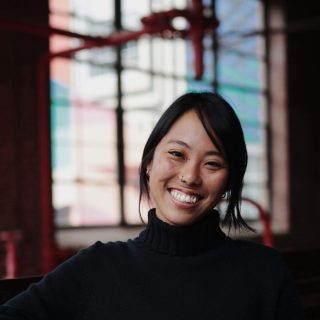Winston-Salem-based photographer and artist Ashley Johnson’s most recent exhibit, Portraits, will be on display at Hanesbrand Theatre in Winston-Salem through Aug. 31. For more information about Johnson, including ways to get donation-based portraits shot by her, visit hiaj.co.
When and why did you get into photography?
I’ve been shooting for about 10 years, or a little over 10 years, but I didn’t really start out as a photographer. I’m kind of like the family documenter. In essence, my different practices of keeping and collecting things has been like a photographic practice for a while. Then people started hiring me for weddings and lifestyle shoots. About three years ago, I decided to put some of that lifestyle stuff aside and take the things I’d see in my head and shoot them. My first series was called Woven and it was me trying out new things and using a lot of textiles and those kinds of materials to make portraits.
I never really classified myself as a photographer until recently. It was a natural progression of how I define myself. In the last few years, I’ve been more keen on sharing.
How would you describe your style?
I would say that it’s very honest — honest and resourceful. I don’t do a lot of editing. I really love to trust that whatever happens when I took the picture is what was meant to happen. I don’t overedit or remove texture from skin or make things look less than or more than when they came in front of my camera. I may try to change the tone of the image but I try to capture the most honest images that I can take.
What inspires or informs your art?
Definitely myself. I began experimenting with photography through hair identity. I made significant change to my hair when I was 24 years old and it was really jarring for me. When I changed my hair, it changed everything around me from dating, how people perceived what I was saying and my own perceptions of myself, and then those stories moved out of that. I take that and I’ll ask models like my nieces what their life is like and what sense of identity they have to their hair and how that changes everything around them.
My sister has three kids so sometimes they’ll come over and we have a day where we do hair. We were just having one of those days where we’re braiding, and I said, ‘Well let me just pause and take photos of them as they are.’ The photos [in Bloom Too] show what it’s like to get your hair done by your mom and those feelings of memories of that very specific experience. Some of the best moments I spent with my mom was when I was getting my hair done. There’s this trust that you have with your mom to make you beautiful, and that practice gets passed down. Braiding isn’t just what you did to your hair, it’s what your mom did to your hair and what her mom did to her hair. It’s very engrained in culture and very engrained in black feminine culture.

©
What about photography captured your attention?
I really like what it feels like when people look at an image of themselves years from now and they can’t recognize themselves or can’t believe where they were then. Like the way we used to document when we were young with a 35 mm camera and would get them developed but now with technology we don’t have that so much. We have selfies but we don’t that have photos of you in your horrible pajamas in the middle of a dirty room. Now everything has to be staged and poised and perfect. Back then you would get a roll developed and you would be like, ‘What?!’
I love seeing [people’s] faces when they see photos of them as kids. A lot of the time I don’t show [my family] photos right away, I show them years later. I get that feeling when I look at old letters, old collections of old papers. Photography is an extension of a way for me to canonize different aspects of my life. I chase that feel-good feeling of what time looks like.
Join the First Amendment Society, a membership that goes directly to funding TCB‘s newsroom.
We believe that reporting can save the world.
The TCB First Amendment Society recognizes the vital role of a free, unfettered press with a bundling of local experiences designed to build community, and unique engagements with our newsroom that will help you understand, and shape, local journalism’s critical role in uplifting the people in our cities.
All revenue goes directly into the newsroom as reporters’ salaries and freelance commissions.




Leave a Reply